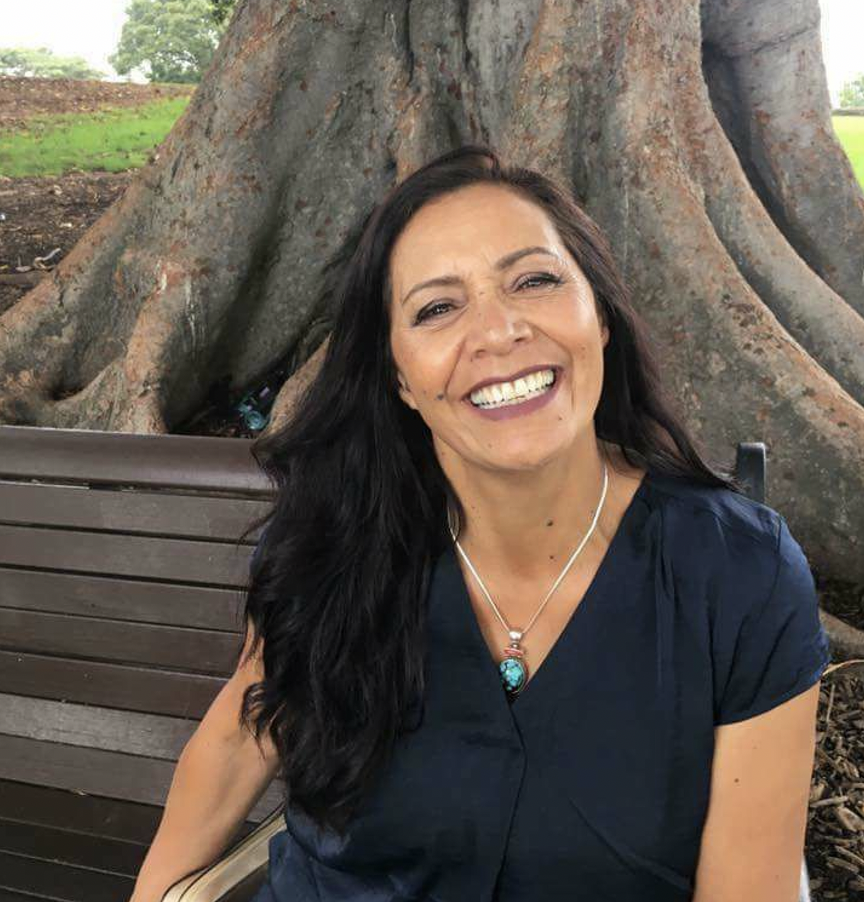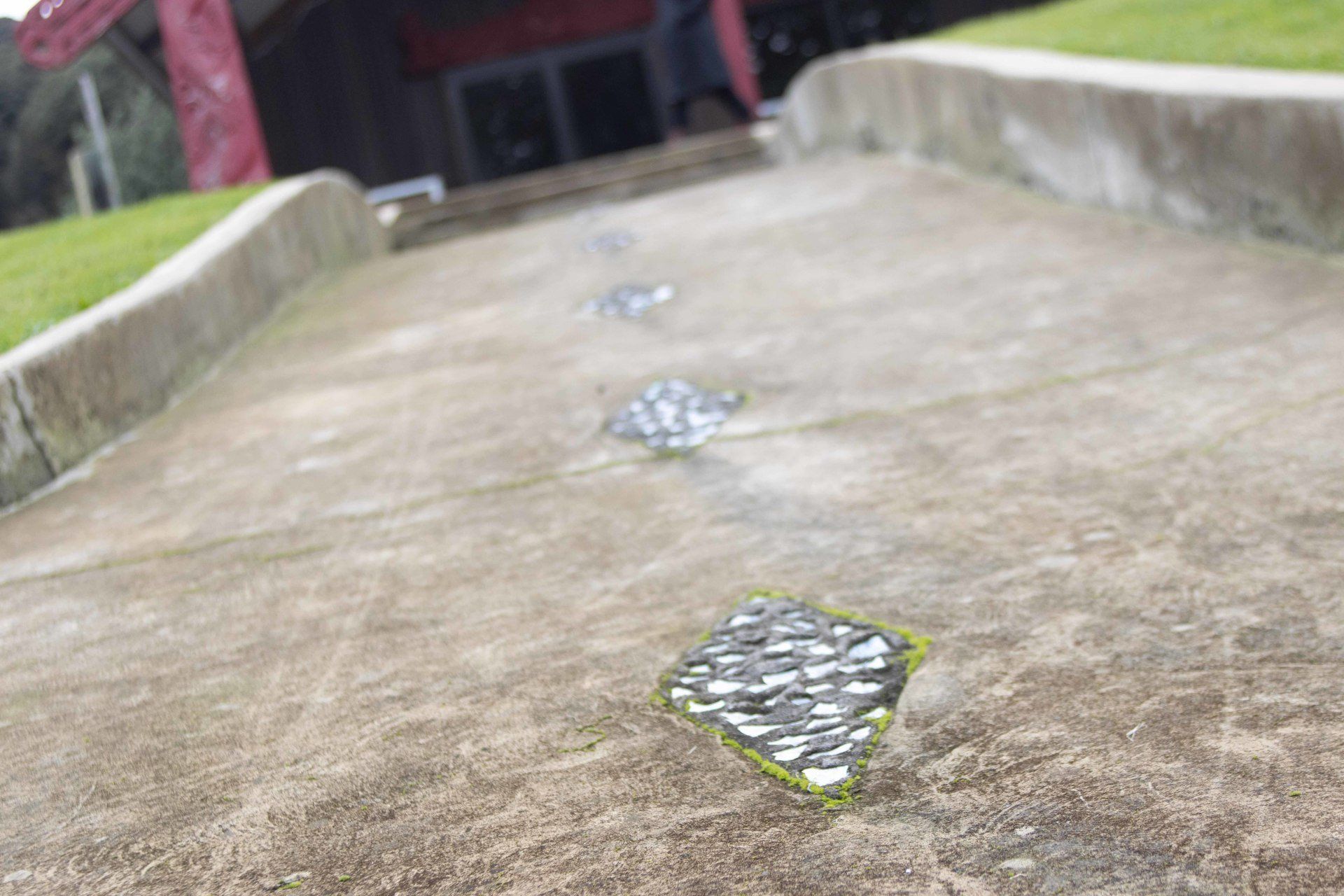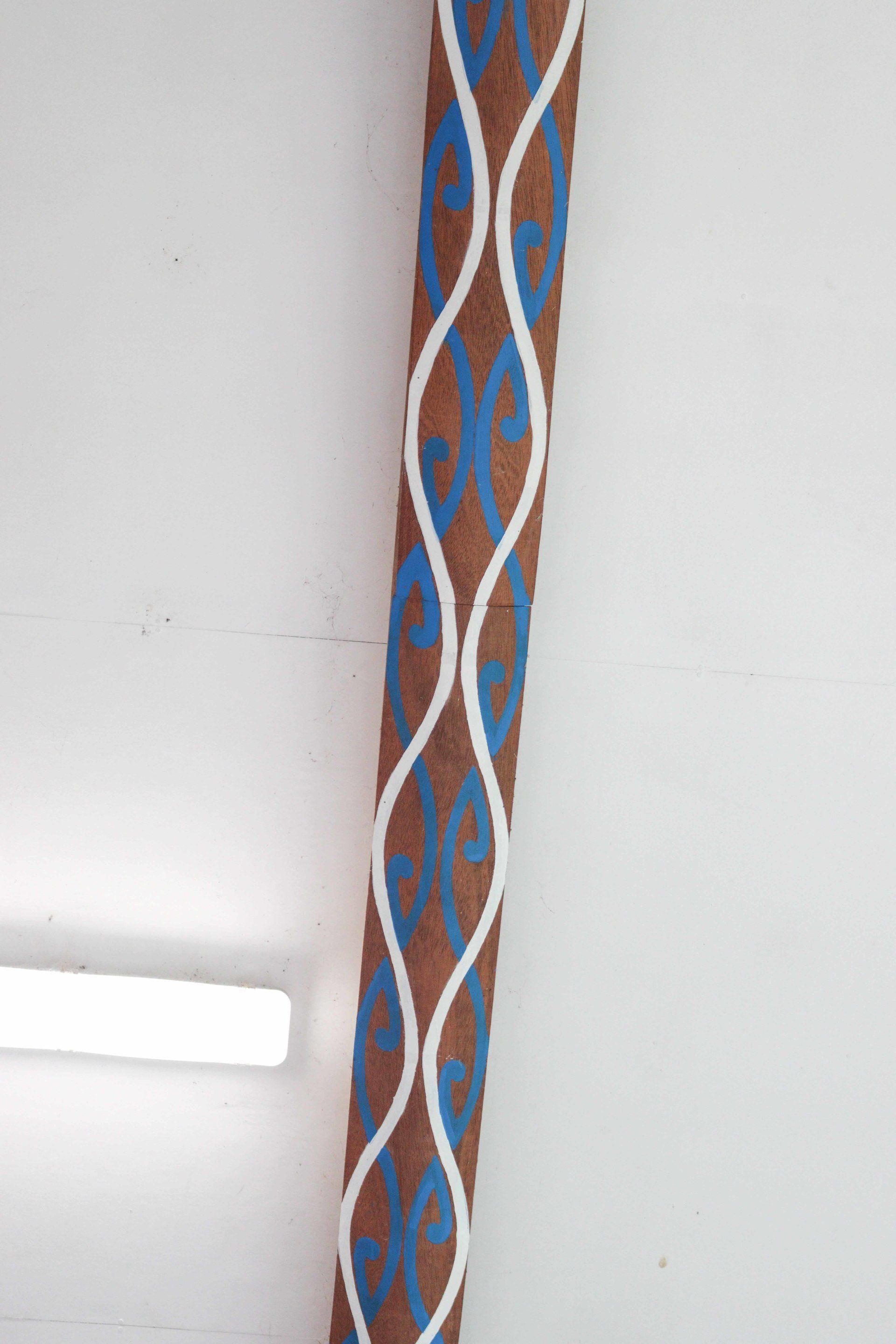Kowhaiwhai
Noelene Moana Ngawaka-Fortzer
Te Mangotihi, a Rehua kowhaiwhai
Te Mangotihi, a Rehua kowhaiwhai, signifies the watchful care of the Mako shark, a kaitiaki of the people of Aotea.
The eyes of the mango are depicted in the koru along with the sharp nose of the shark which is the point before it curves into the koru. Interwoven is the wairua (in white) that flows from this realm down into the carvings of the tupuna.
There is tauparapara and stories about this Kaitiaki that have been called for safe passage or help on the sea to and from Aotea.
This kowhaiwhai signals the prominent and important pathway of Te Motu o Aotea for sea voyaging
The long koru represent waka on the sea, their long travels and tells of the interaction by the people of Aotea with different iwi that travelled down the coast and would stop at Aotea. O Kupe, Oruawharo and other places on Aotea were named for Rangatira who visited at various times.
The continuous angular V shape is a representation of the islands and the wairua that flows through Aotea and outcrops.





